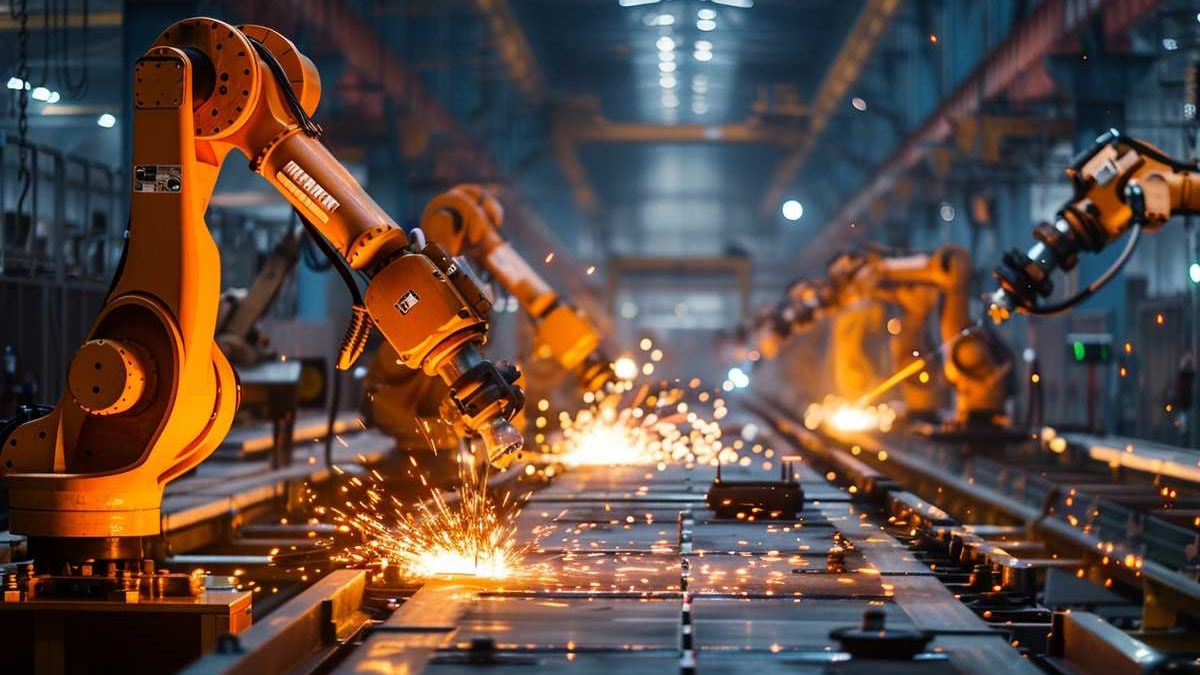In the intricate world of fabrication, where precision and efficiency are paramount, arc welding stands as a cornerstone. Its ability to fuse metal components together with heat generated by an electric arc has been indispensable across various industries, from automotive to aerospace. However, traditional arc welding methods have their limitations, often plagued by inconsistencies and safety concerns. Enter robotics – a game-changer poised to revolutionize arc welding and reshape the landscape of fabrication processes.
Historical Overview of Arc Welding
Arc welding, in its rudimentary form, traces back to the late 19th century, with the invention of the carbon arc welding process by Nikolay Benardos. Over the decades, arc welding techniques evolved, culminating in the development of modern methods like shielded metal arc welding (SMAW) and gas metal arc welding (GMAW). Despite advancements, challenges including inconsistent weld quality and labor-intensive operations persisted, driving the need for innovation.
As industries expanded and demands for stronger, more efficient welding grew, researchers and engineers continued to refine arc welding processes. The introduction of inert gases, such as argon and helium, in the mid-20th century paved the way for gas tungsten arc welding (GTAW), also known as Tungsten Inert Gas (TIG) welding, renowned for its precision and versatility.
Fundamentals of Robotics in Arc Welding
Robotic welding systems represent a paradigm shift in fabrication, combining the precision of automation with the versatility of arc welding. These systems comprise robotic arms equipped with welding tools, power supplies, and sensors, orchestrated by sophisticated software. Unlike manual welding, robots offer unparalleled precision, executing welds with consistent quality and efficiency.
The deployment of robotic welding systems in fabrication environments offers numerous advantages. With robotic arms handling welding tasks, human operators are freed from repetitive and physically demanding work, reducing fatigue and the risk of injuries. Moreover, robots can operate continuously, leading to higher throughput and productivity compared to manual welding methods.
Technology Behind Robotic Arc Welding
The technology powering robotic arc welding continues to advance, driven by a quest for enhanced performance and reliability. From traditional methods like metal inert gas (MIG) welding to advanced processes like laser welding, robots are versatile in accommodating various welding techniques. Moreover, integration of sensors and vision systems enables robots to adapt to changing workpieces and environments, ensuring precise welds every time.
Recent advancements in robotic welding technology have focused on improving process efficiency and flexibility. For instance, advancements in programming and control systems enable robots to dynamically adjust welding parameters based on real-time feedback from sensors, ensuring optimal weld quality and consistency. Additionally, collaborative robots (cobots) equipped with advanced safety features are increasingly employed in arc welding applications, allowing humans and robots to work side by side safely.
Benefits of Robotic Arc Welding in Fabrication
The adoption of robotic arc welding brings a myriad of benefits to the fabrication industry. Firstly, it significantly boosts productivity by streamlining welding processes and reducing cycle times. Robots can operate continuously, without the need for breaks or rest, leading to higher throughput and reduced production lead times.
Robots ensure consistency in weld quality, minimizing defects and rework. With precise control over welding parameters and the ability to maintain a steady welding arc, robots produce welds of superior quality compared to manual welding methods. This consistency is particularly crucial in industries such as aerospace and automotive, where weld integrity is paramount.
Challenges and Limitations
Despite its transformative potential, robotic arc welding faces several challenges and limitations. High initial investment costs remain a barrier for small to medium-sized businesses, limiting widespread adoption. The cost of purchasing and installing robotic welding systems, including robotic arms, welding equipment, and associated infrastructure, can be substantial, particularly for businesses with limited financial resources.
Furthermore, maintenance and training requirements for robotic systems can be daunting, requiring specialized expertise. Regular maintenance is essential to ensure the optimal performance and longevity of robotic welding systems. Additionally, comprehensive training programs are needed to educate operators on how to program, operate, and maintain robotic welding systems safely and effectively.
Future Trends and Innovations
Looking ahead, the future of robotic arc welding holds exciting prospects. Emerging technologies such as artificial intelligence (AI) and machine learning promise to optimize welding processes further. By analyzing vast amounts of data generated during the welding process, AI algorithms can identify patterns, optimize welding parameters, and predict potential defects, leading to improved weld quality and efficiency.
Integration with other fabrication techniques like 3D printing and CNC machining opens doors for seamless manufacturing workflows. Robotic welding systems can be integrated into automated manufacturing cells, working in tandem with other robotic and automated systems to produce complex components with minimal human intervention. This integration enables manufacturers to achieve higher levels of efficiency, flexibility, and cost-effectiveness in their fabrication processes.
Conclusion
In conclusion, the integration of robotics into arc welding heralds a new era of innovation in fabrication. By leveraging the precision and efficiency of automation, robotic welding promises to revolutionize the way we manufacture metal components. While challenges exist, the benefits – improved productivity, quality, and safety – far outweigh the obstacles. As industries embrace robotic arc welding, they pave the way for a future where fabrication is not just efficient but also sustainable and environmentally conscious. With ongoing advancements in technology and a commitment to innovation, the potential of robotic arc welding to revolutionize fabrication processes is limitless.


